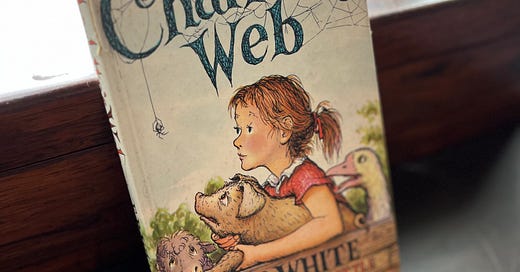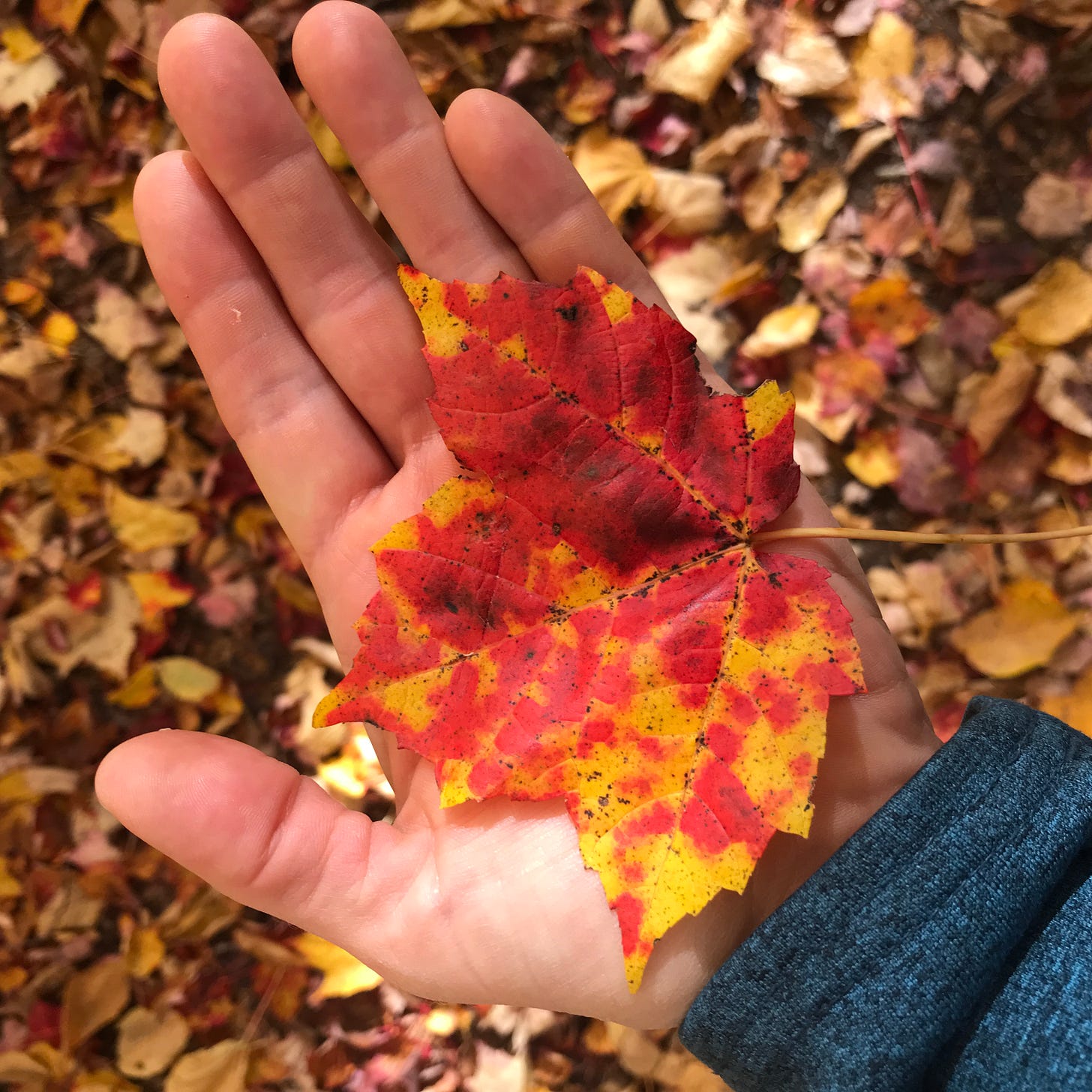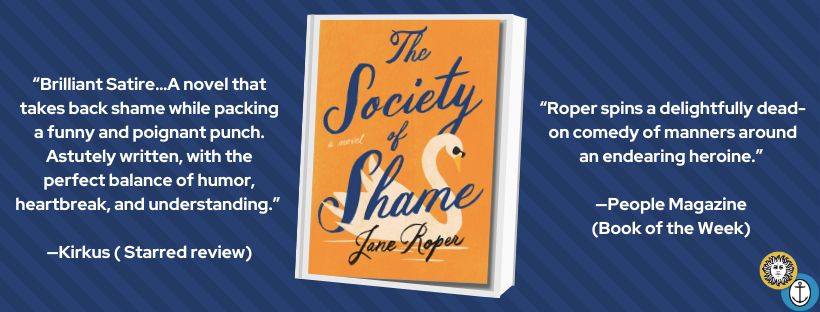This time of year—back to school, back to the routine, on the cusp of Fall—Charlotte’s Web is often on my mind.
I suppose it’s slightly odd that I love Charlotte’s Web so much, given my complicated feelings about spiders. If you ever happen to ask me how I feel about them (as one does), I will say that I don’t particularly like spiders—especially hairy ones, which can go fuck themselves—but I do respect them.
They really are remarkable creatures: the webs, the dexterity, the mad hunting skills, the silk balloons they spin to take flight. One of my favorite activities at Sandy Island, the YMCA family camp on Lake Winnipesaukee we go to at the tail end of every August, is spider watching. (This is not an official, organized activity, mind you; it’s just a thing I do.)
The best place for this is the mini-lavs, where spiders set up camp in the upper corners and prey on the bugs that squeeze in through the gaps over the doors or holes in the high screen windows, attracted by the light. Believe me, you haven’t lived until you’ve watched a spider sprinting toward a bug just caught in her web, stunning it into submission, and expertly rolling it into little white spider cigar, all while brushing your teeth.
Well, maybe you have.
You also see lots of spider egg sacs up in the crooks and corners of the lavs and other buildings and porches on the island. And slow, tired spiders, who seem like they’ve seen better days. Some newly dead spiders, too.
If you’ve read Charlotte’s Web, none of this will come as a suprise to you. In that book we learn, along with Wilbur the terrific / radiant / humble pig, that as Fall approaches, common orb weaving spiders like Charlotte, and like my spider pals in New Hampshire, lay their eggs. Not long after that, they die. One life ends and hundreds of new ones begin. Every year, the cycle repeats.
And every year, our (non-spider) family goes back to Sandy Island, and does the same things, sees the same people. Every year, we come back home on Labor Day weekend, to the start of a new year. (Yes, September is the new year. January is a sham.) The kids go back to school. I refocus on my work and routine. We relish the sunny days and cool nights. We slaughter the pigs.
But every year, the kids are a little older, and so are we—a reminder that life isn’t a really a carousel of time, but a corkscrew. We come back around, but never to the exact same place. That fact is never as achingly apparent as when the back to school and off to college photos fill your social media feeds.
There’s a melancholy to this time of year, a sense of impending loss. But it makes you appreciate the pleasures of the season—of everything—that much more. I think this is why so many people, myself included, consider Fall their favorite season.
The dying leaves are breathtaking.
Which brings me back to Charlotte’s Web.
If you only read the book as a child, you might still be under the impression that it’s just a charming children’s story about a girl and a pig and a spider who can, for some reason, read.
I mean, it is that. But, as I discovered when I read it to my own children nine or ten years ago, it’s also about the cyclical nature of life. It’s about birth and death and love and loss. It’s about anticipating and remembering. It’s about growing up.
At the beginning of the story, Fern, the little girl who convinces her father not to kill Wilbur, the runt of the new pig litter, is enthralled by the animals of the farm. By the end of the book, she’s more interested in a boy.
Near the beginning of the book, Wilbur learns that he’s destined for the slaughterhouse. Charlotte saves his life, but in doing so hastens her own death. Wilbur will never be eaten, thanks to his new celebrity status, but he will, of course, die eventually.
In the meantime, though, there are Charlotte’s children and grandchildren and great grandchildren, some of whom fly away on their little spider balloons, and some of whom stay in the barn and chat with Wilbur and the other animals. There are goslings and lambs and calves each spring. And although Wilbur may not live to see it, Fern will probably one day have children, too. The cycle continues.
All this, and the prose itself is just gorgeous.
Seriously, get your hands on a copy and read it. Read it to yourself or read it aloud to your children or partner or elderly parent. Read it now, during this season of simultaneous beginning and ending, when the circles are so keenly apparent. (I have no way of knowing for sure, but I have a feeling E.B. White loved the heck out of Fall.)
And if you’re not convinced yet, here, read this, from the very end of the book:
Life in the barn was very good—night and day, winter and summer, spring and fall, dull days and bright days. It was the best place to be, thought Wilbur, this warm delicious cellar, with the garrulous geese, the changing seasons, the heat of the sun, the passage of swallows, the nearness of rats, the sameness of sheep, the love of spiders, the smell of manure, and the glory of everything.
See?
Happy September, and thanks as always for reading.
All posts on Jane’s Calamity are free and publicly available, but writing is how I make my living. If you enjoy my strange brand of Substacking, and/or if you have complex feelings about spiders, please consider upgrading to a paid subscription. Or, hey, maybe buy my book!







You wax sentimental, and I adore it. :)
Absolutely one of my favorite books, though I used to have to struggle REALLY hard not to cry when I read it to my kids! Thanks for the reminder. BTW, I loved seeing you at the Newburyport Writers Festival with my friend Nancy.